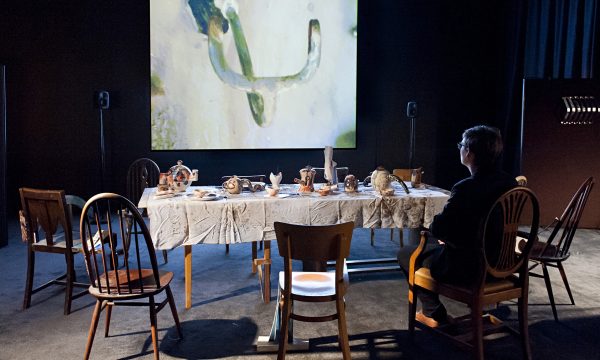Namwali Serpell is a rarity: an academic and novelist whose criticism is as vital as her fiction. Since we first spoke, in September 2020, she has both taken up a position as Professor of English at Harvard and, with her debut novel The Old Drift (2019), won the prestigious Arthur C. Clarke award for science fiction, the first black woman to have done so. The award’s last winner, Tade Thompson, has called Serpell’s book ‘the great African novel of the twenty-first century’. In a characteristically radical and generous gesture, having won the award on the day it was announced that no murder charges would be filed against the police officers responsible for killing Breonna Taylor, Serpell donated her prize money to the bail funds of those who have protested that injustice.
The Old Drift is a remarkable book, an epic of Zambia, where Serpell was born, which, over its nearly 600 pages, refracts the country’s history – from Cecil Rhodes to Rhodes Must Fall – through the mistakes and misfortunes of the members of three families, some of them real historical figures, others otherworldly, like figures from fairytale or folklore, over six generations. The novel crosses genre just as it spans time, taking in magic realism, social realism, satire, science fiction, historical fiction, spy thriller… Reading it, you realise what a sham, what a constraint ‘genre’ is. It’s a polyphonous and brimming piece of work; intricately, shiftingly patterned, acute in its sustained variousness. It seems, throughout, to shimmer with a meaning you can never quite discern, provoking what Serpell, in her first, academic book, Seven Modes of Uncertainty (2014), describes as a ‘useful dizziness’ – and it does so, despite the immense and real suffering it contains, in a joyful, generous way.
Seven Modes of Uncertainty is a rigorous and ingenious academic exploration of a number of modern novels – among them Lolita, Beloved and American Psycho – that use strategies of structural uncertainty (two characters with irreconcilable versions of events, for instance) to challenge their readers’ ethical engagement. Reading such books, Serpell demonstrates, provides less an illusory experience of empathy, as is often claimed for the novel, than an encounter with irresolvable conflict, such that ‘the isolation of moral propositions’ becomes ‘utterly untenable’. The result is a reading experience with an undercurrent of doubt – a ‘niggling’, or ‘useful dizziness’ – that allows a reader to experience ethics as a living process, rather than as an inert set of laws. One of its aims, therefore, is to re-enliven debates about the ethics of art, and the art of ethics, an aim it shares with Serpell’s new book, Stranger Faces (2020).
Stranger Faces (2020) is a lens-shifting book, the kind that, once read, you can’t imagine not having read. It is a collection of critical essays – funny, fierce, elegant, iconoclastic, moving and entirely unique – about strange faces. It challenges you to see faces differently. The face, Serpell writes,
is fundamental to how we understand ourselves. The face means identity, truth, feeling, beauty, authenticity, humanity. It underlies our beliefs about what constitutes a human, how we relate emotionally, what is pleasing to the eyes, and how we ought to treat each other.
But these beliefs rest on ‘a specific version or image of the face. We might call it The Ideal Face.’ The faces that interest Serpell, here, are those that deviate from this ideal, that escape our pinning-down, our discernment: ‘the disabled face, the racially ambiguous face, the digital face, the face of the dead’. She is interested ‘not in their ideality but their mutability, the way they shift and layer, always abrim with charged relation’. These are faces that hover between personhood and thinghood and, in their doing so, and in the play they thus afford, might, she suggests, inform new, more honest, more complicated, more pleasurable ways of knowing ourselves and one another.
We conducted our interview by email in early September 2020, deep into a year of isolation, stasis, anxiety, upheaval, crisis, and uncanny weather.




